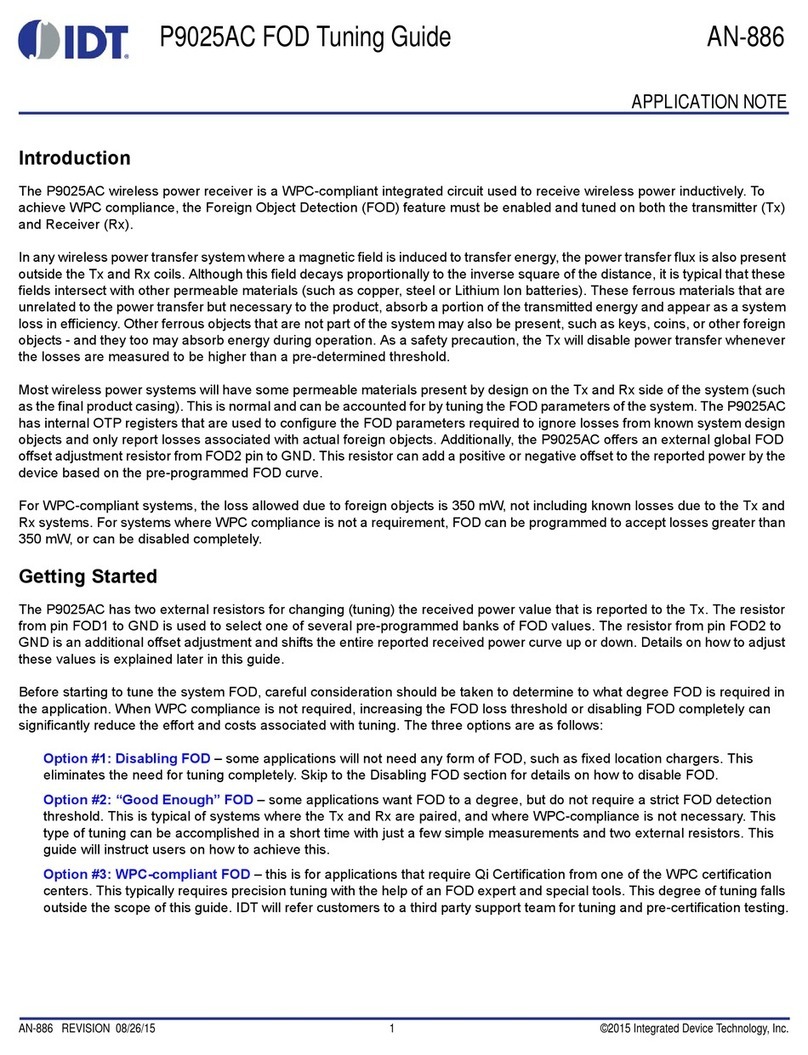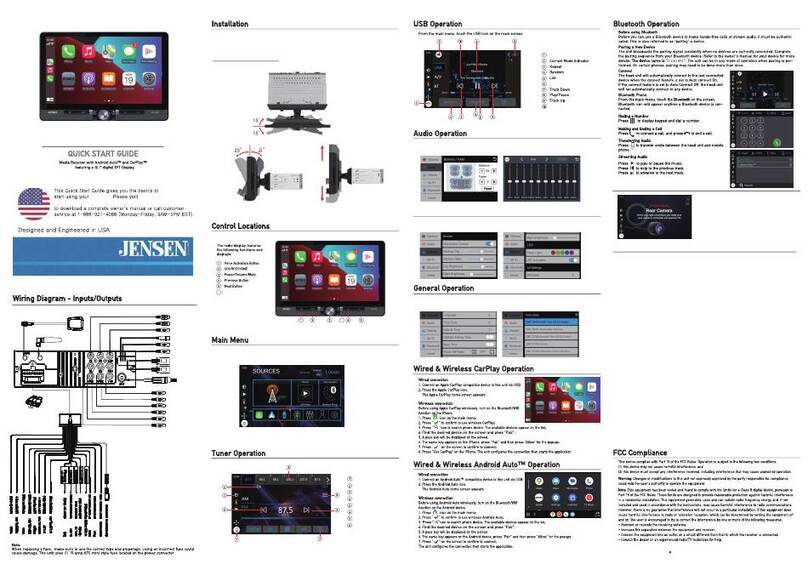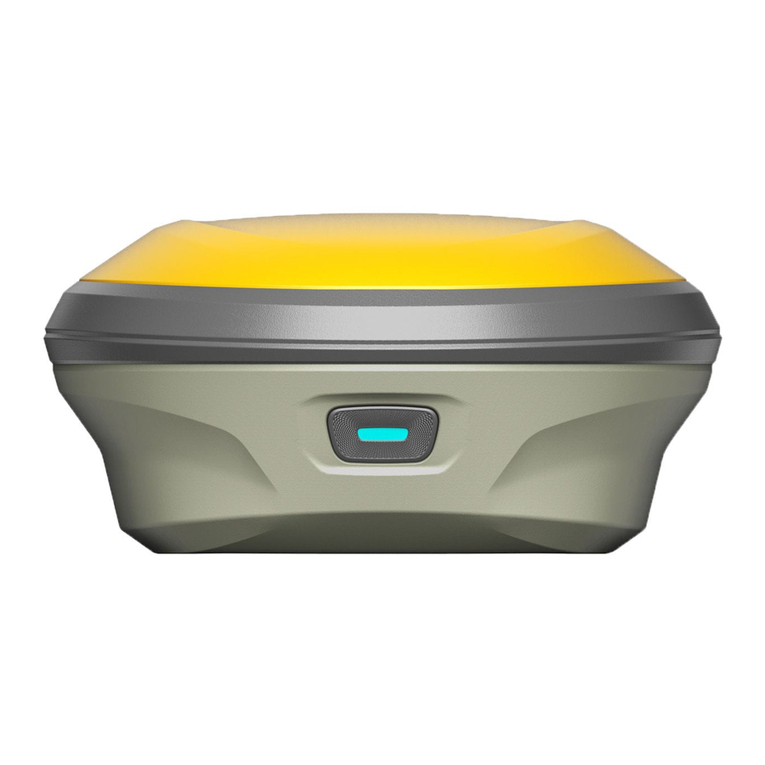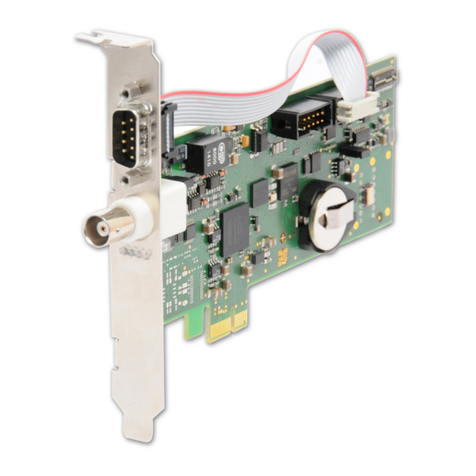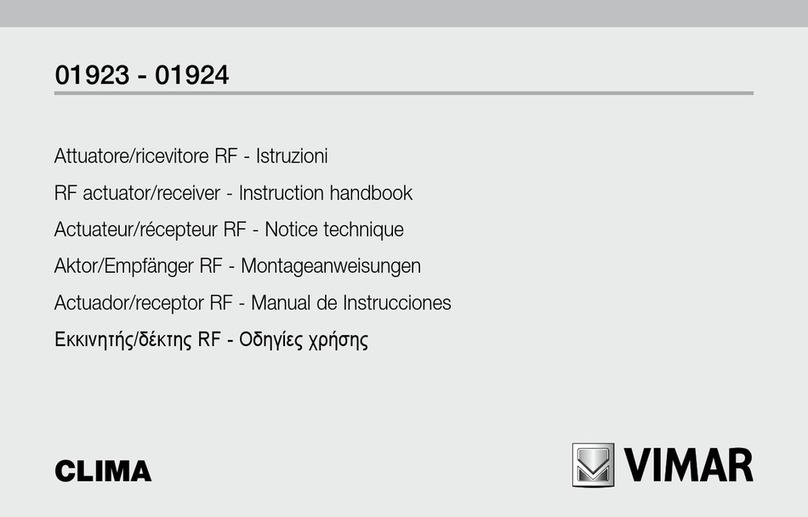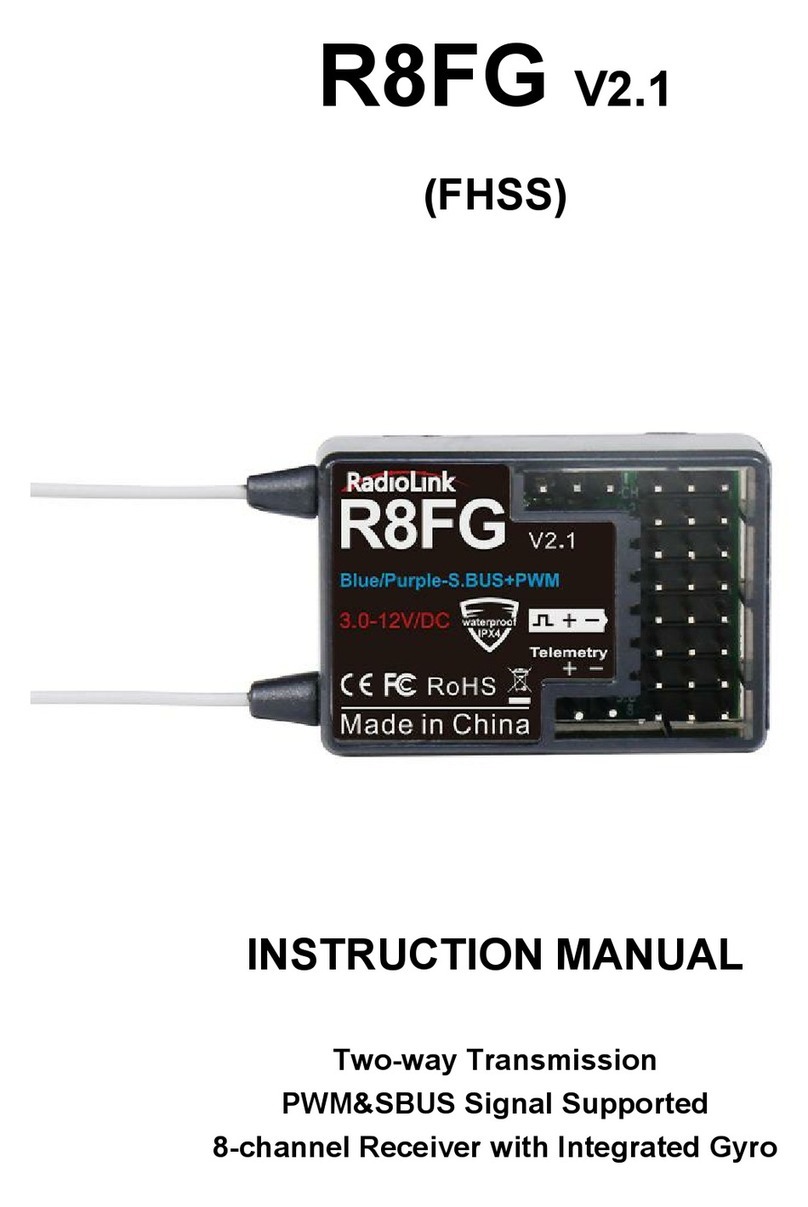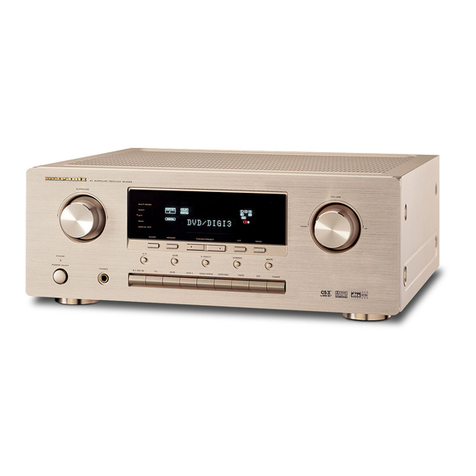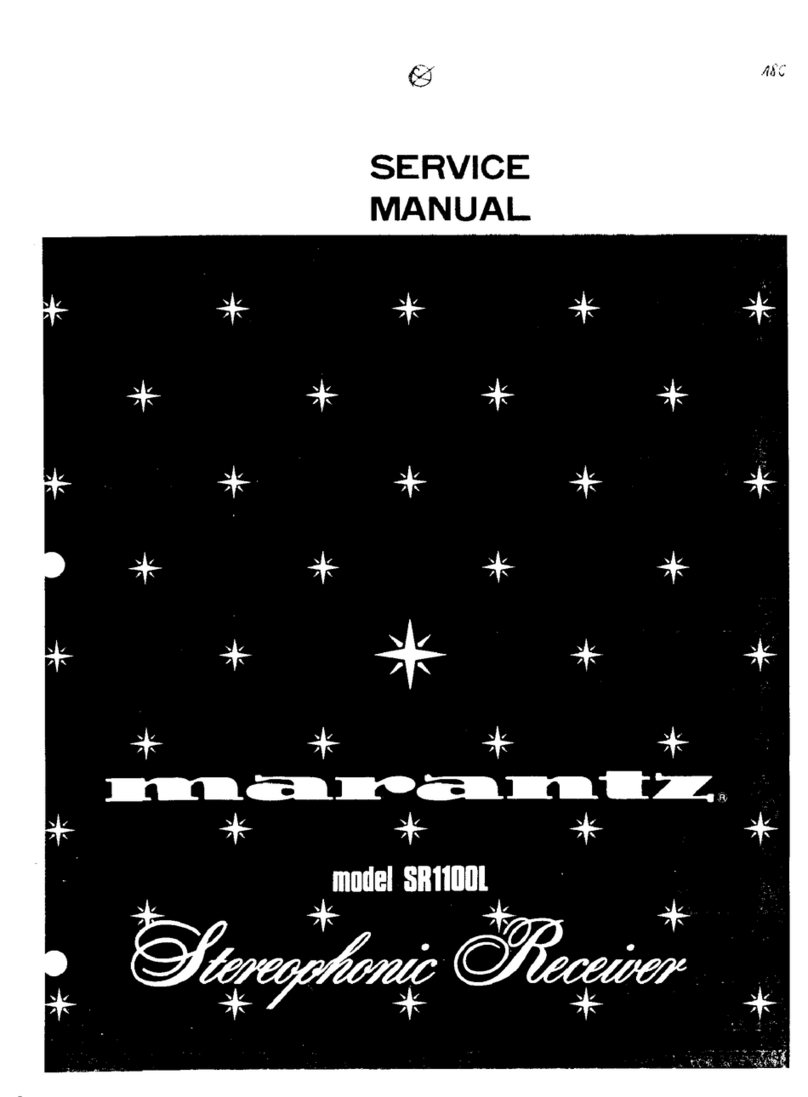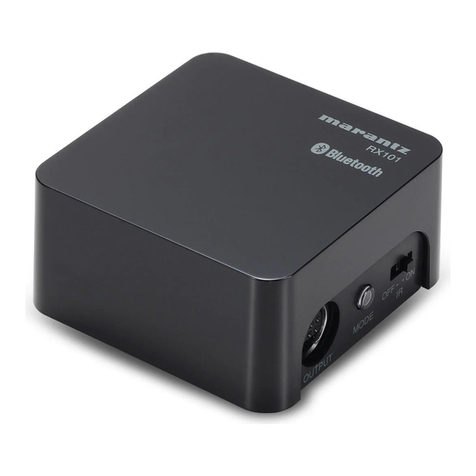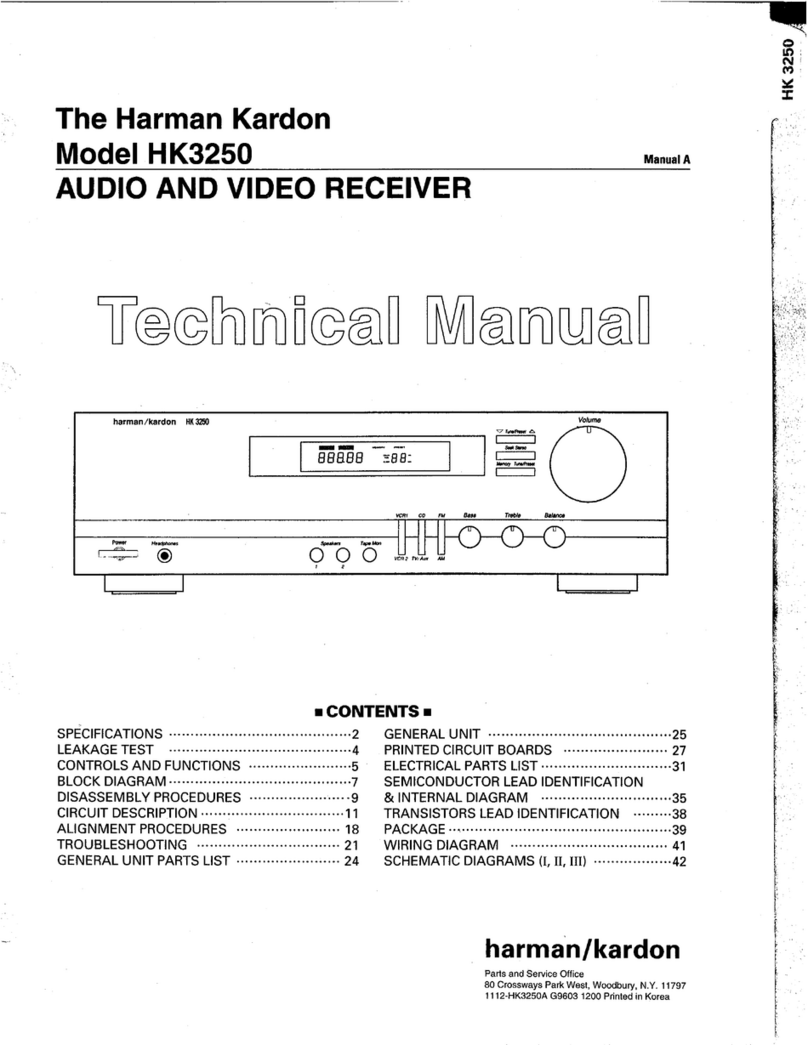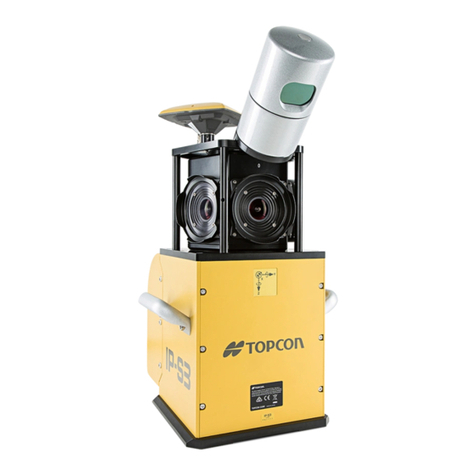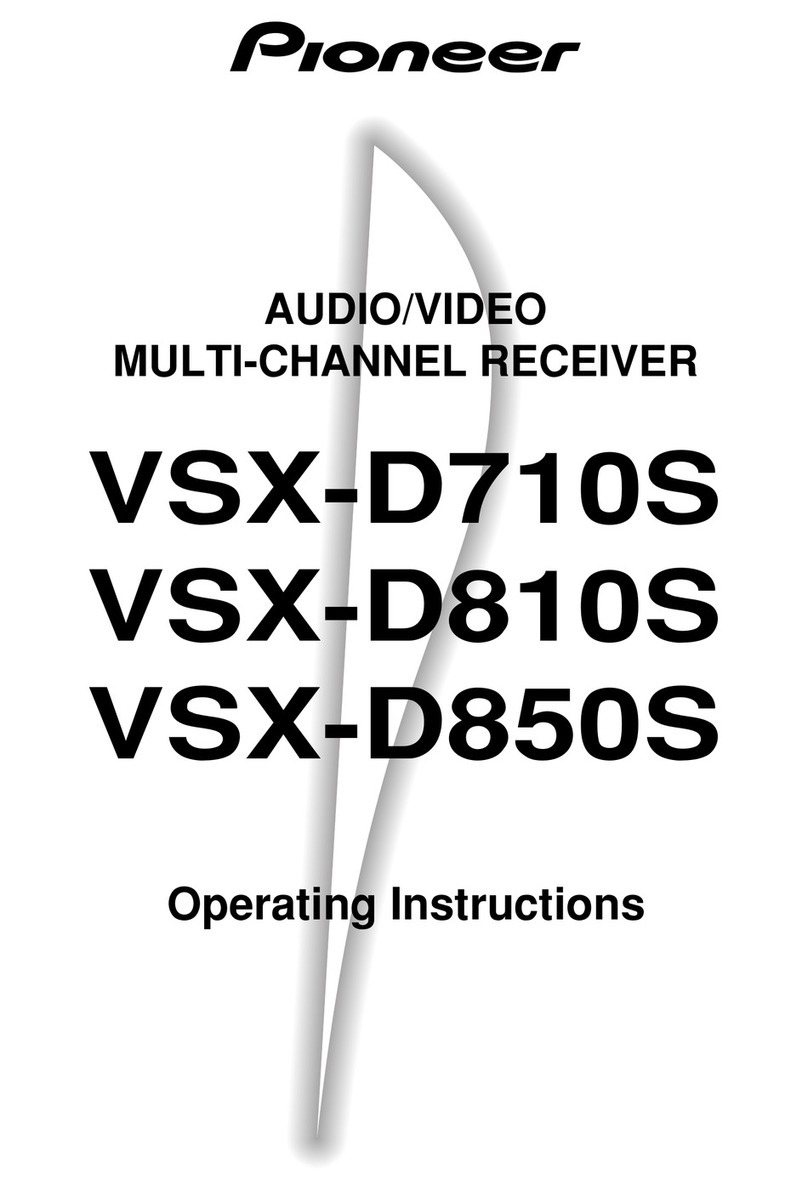IDT WP3W-RK User manual

≤ 3W Wireless Power Receiver and
Transmitter Reference Kit
WP3W-RK
Reference Kit Manual
© 2016 Integrated Device Technology, Inc
1
May 16, 2016
Features
Fully-functional wireless power receiver and transmitter for
plug-and-play prototyping
High efficiency transfer up to 79% at 5V/600mA
Three coil size options meet various application requirements
—30 mm diameter for 3W applications
—20 mm diameter for 2W applications
—15 mm diameter for 1W applications
Low BOM cost and high density PCB design for ultra-compact
applications
Receiver (Rx) has 4-layer, performance-optimized PCB
reference layout for copying to system board
Transmitter (Tx) has 2-layer, performance-optimized PCB
reference layout for copying to system board
5.0V @ up to 0.6A output targets for wearable and many other
lower power applications
Only 2 high-voltage capacitors necessary for Rx
LED indicator to indicate power transfer on both Rx and Tx
boards
Break-away coil mount enables fast prototyping
Programmable output voltage from 4.5V to 6V
Over temperature protection and programmable over current
protection on Rx board
Selectable Tx input current limit capability for USB protection.
Programmable LED pattern on the Tx board
Supported by an extensive library of digital resources to ease
design-in effort
Application notes, datasheets, manuals, guides, videos, layout
files, and other digital resources can be found at:
www.IDT.com/WP3W-RK
Kit Contents
Fully-assembled P9027LP-R-EVK and P9235A-R-EVK
reference boards fitted with 2W coils
Two additional coil sets for 1W and 3W output power
1.5 ft. USB cable
Description
IDT’s wireless power reference kit targets applications ranging
from 0.5 to 3W. The reference kit is comprised of both the
transmitter (P9235A-R-EVK) and the receiver (P9027LP-R-EVK)
with three different coil size options supporting applications with
different form factors and power levels. The high-efficiency,
turnkey reference design is supported by comprehensive online,
digital resources to significantly ease design-in effort and enable
rapid prototyping.
The receiver design is based on the P9027LP-R, a highly
integrated, high efficiency solution suited to a wide range of
compact applications requiring up to 600mA load current. The
layout has been optimized on a 4-layer PCB, compliant with
wearable device layout rules and form factors. The ultra-compact
form factor is ideal for rapid product prototyping. The active area
of the P9027LP-R-EVK board is 5.7 mm x 5.7 mm and is ideal for
small form factor and thermally-constrained applications.
The transmitter design is based on the P9235A-R and can be
powered from a micro-USB or other input voltage from 4.5V to
5.5V. The P9235A-R is based on a flexible 32-bit ARM® Cortex®-
M0 processor with integrated full bridge power stage drivers and
on-chip simultaneous voltage and current demodulation. It
provides a low component count solution on an optimized 2-layer
hardware reference layout intended for seamless copy/paste to a
customer application board. The active area of the P9235A-R
board is 22.7mm x 21.2mm and is ideal for space-constrained,
low power transmitter designs.
Figure 1. Kit Photograph

WP3W-RK Reference Kit Manual
© 2016 Integrated Device Technology, Inc
2
May 16, 2016
Hardware Overview
Figure 2. P9027LP-R-EVK Reference Board Illustration Top Layer
Figure 3. P9235A-R-EVK Reference Board Illustration Top Layer

WP3W-RK Reference Kit Manual
© 2016 Integrated Device Technology, Inc
3
May 16, 2016
Figure 4. Tx and Rx Coil Pairs for 1W, 2W and 3W Applications

WP3W-RK Reference Kit Manual
© 2016 Integrated Device Technology, Inc
4
May 16, 2016
Usage Guide
These reference boards are designed to demonstrate the performance and functionality of the P9027LP-R and P9235A-R as a fully-functional
wireless power receiver and transmitter pair. This solution is suitable for wearable devices as well as other end products that require up to 3W
output power from the wireless power receiver. In most cases, these boards can be imported into an existing customer system for evaluation
and prototyping. The WP3W-RK evaluation kit is based on the WPC Qi standard protocol but targets ‘paired’ transmitter-receiver solutions –
sometimes called end-to-end customer applications where the receiver is only expected to work with a known transmitter.
Quick-Start Guide
Follow these simple steps to power-up and begin using the P9027LP-R-EVK and P9235A-R-EVK boards:
1. Power up the P9235A-R-EVK board by connecting the USB cable to either a notebook computer or a USB adaptor with 5V
output (preferred) or a power supply
2. Verify that the red and green LED flashes once, respectively, –the P9235A-R-EVK board is up and running now
3. Place the P9027LP-R-EVK board on top of the P9235A-R-EVK board with the coil of the P9027LP-R-EVK facing down and
centered on the coil of the P9235A-R-EVK board. The green LED on the P9027LP-R-EVK board indicates that it has been
successfully powered up.
4. Optional: Solder two 28-gauge wires to the OUT and GND pins on P9027LP-R-EVK board. Connect these two wires to an
electronic load.
5. Set the electronic load current to zero initially and then gradually increase the load current up to 400mA with the attached 2W
coils
Output Power
The output of the P9027LP-R-EVK’s LDO regulator has a plated via labeled OUT, and the DC ground return path is labeled GND. The output
provides a nominal 5.0 V with 400mA output current capability using the attached 20mm diameter coil. When switched to the 30mm diameter
coil (supplied in the kit), it can provide up to 600mA output current. The plated vias have a 15 mil diameter, allowing for 28-gauge wire or
smaller.
P9027LP-R Board LED Power Indicator
The P9027LP-R-EVK is equipped with a single green LED power indicator connected from OUT to ACTB. This LED will be illuminated when
the system reaches the desired operating point and enables the DC voltage output. This LED is entirely optional and is included for evaluation
purposes only. When illuminated, it draws less than 1 mA of current from the output. If desired, the brightness of the LED can be increased by
lowering the value of resistor R3.
P9027LP-R Board Test Point Accessibility
The P9027LP-R-EVK reference board was designed so that the core layout could be easily “dropped-in” to an existing system board design.
For this reason, all of the necessary inputs and outputs are placed toward the edge of the board to eliminate uncertainty in escape routing.
For more information about copying the digital layout files, refer to application note AN-933.
When prototyping with this board, it is important to use a low-resistance wire that is rated for the expected output current. This will avoid
damage to the wire and minimize voltage drops on its way to the load.

WP3W-RK Reference Kit Manual
© 2016 Integrated Device Technology, Inc
5
May 16, 2016
Coil Spacer (Upside-down Coil)
A good wireless power transfer system should maintain a small separation gap between the transmitter coil and the receiver coil. For the
reference board, the receiver coil has been mounted upside-down on the P9027LP-R-EVK board. The PCB area under the Rx coil is used as
a spacer (0.5mm) to simulate the thickness of a wearable device case, and there is no copper conductor. While the coil itself is protected by
non-conductive encapsulation, it is recommended to use some type of spacer to achieve optimal power transfer efficiency.
Similarly a 0.8mm plastic spacer is placed on top of the Tx coil to simulate the casing of a final transmitter product. With both spacers the total
distance between the coils is about 1.5mm.
Separating the Coil from the Spacer
The P9027LP-R-EVK reference board has been precisely tuned for the stock coil attached to the board. The PCB has been designed with a
score line enabling users to snap-off of the active PCB section. When doing so, carefully peel the coil off from the Rx PCB. Once the coil is off,
it is recommended to use scissors to cut the active board area along the score lines. To see a video demonstration, visit:
www.IDT.com/WP3W-RK.
If it is necessary to extend the length of the coil leads when working on prototype, it’s best to unsolder them from the PCB prior to separating
the active PCB area from the rest of the board.
Performance Characteristics
Figure 5. Typical Efficiency Curve for 30mm Coil
45.00
50.00
55.00
60.00
65.00
70.00
75.00
80.00
85.00
60 120 180 240 300 360 420 480 540 600
Efficiency (%)
Iout (mA)
Vin=5V, Vout=5V, Iout=600mA, Tx=P9235A-R, Tx coil=760308101103, Spacer=1.5mm,
Rx coil=760308102213, Rx=P9027LP-R, No air flow, Room temperature

WP3W-RK Reference Kit Manual
© 2016 Integrated Device Technology, Inc
6
May 16, 2016
Figure 6. Load Regulation for 30mm Coil
Figure 7. Typical Efficiency Curve for 20mm Coil
-0.5
-0.4
-0.3
-0.2
-0.1
0
0.1
0.2
0.3
0.4
0.5
060 120 180 240 300 360 420 480 540 600
Loasd Regulation (%)
Iout (mA)
Vin=5V, Vout=5V, Iout=600mA, Tx=P9235A-R, Tx coil=760308101103, Spacer=1.5mm,
Rx coil=760308102213, Rx=P9027LP-R, No air flow, Room temperature
25.00
30.00
35.00
40.00
45.00
50.00
55.00
60.00
65.00
70.00
75.00
40 80 120 160 200 240 280 320 360 400
Efficiency (%)
Iout (mA)
Vin=5V, Vout=5V, Iout=400mA, Tx=P9235A-R, Tx coil=760308101104, Spacer=1.5mm,
Rx coil=760308101220, Rx=P9027LP-R, No air flow, Room temperature

WP3W-RK Reference Kit Manual
© 2016 Integrated Device Technology, Inc
7
May 16, 2016
Figure 8. Load Regulation for 20mm Coil
Figure 9. 5V/400mA Thermal Images Using 20mm Coil
P9235A-R: 39.2 Degree C
Coil: 45.9 Degree C
P9027LP-R: 40.5 Degree C
-0.5
-0.4
-0.3
-0.2
-0.1
0
0.1
0.2
0.3
0.4
0.5
040 80 120 160 200 240 280 320 360 400
Loasd Regulation (%)
Iout (mA)
Vin=5V, Vout=5V, Iout=400mA, Tx=P9235A-R, Tx coil=760308101104, Spacer=1.5mm,
Rx coil=760308101220, Rx=P9027LP-R, No air flow, Room temperature

WP3W-RK Reference Kit Manual
© 2016 Integrated Device Technology, Inc
8
May 16, 2016
Figure 10. 0 to 400mA Step Load Response (Ch1=Vrect, Ch2=VSNS, Ch3=Vout, Ch4=Iout)
Figure 11. No Load Start-up by Tx Input Power (Ch1=Vrect, Ch2=VIN, Ch3=Vout,Ch4=Iout)

WP3W-RK Reference Kit Manual
© 2016 Integrated Device Technology, Inc
9
May 16, 2016
Figure 12. 600mA Full Load Start-up by Tx Input Power (Ch1=Vrect, Ch2=VIN, Ch3=Vout,Ch4=Iout)
Figure 13. No Load Start-up by Rx Enable Signal (Ch2=EN, Ch3=Vout, Ch4=Iout)

WP3W-RK Reference Kit Manual
© 2016 Integrated Device Technology, Inc
10
May 16, 2016
Figure 14. 600mA Full Load Start-up by Rx Enable Signal (Ch2=EN, Ch3=Vout, Ch4=Iout)
Figure 15. Rx Over Temperature Protection (Ch1=Vrect, Ch2=Vin, Ch3=Vout, Ch4=INT)

WP3W-RK Reference Kit Manual
© 2016 Integrated Device Technology, Inc
11
May 16, 2016
Figure 16. Rx Over Current Protection (Ch1=Vrect, Ch2=Iout, Ch3=Vout, Ch4=INT)

WP3W-RK Reference Kit Manual
© 2016 Integrated Device Technology, Inc
12
May 16, 2016
P9027LP-R-EVK Schematic
Figure 17. P9027-R-EVK Board Schematic

WP3W-RK Reference Kit Manual
© 2016 Integrated Device Technology, Inc
13
May 16, 2016
P9027LP-R-EVK Component Map and Bill-of-Materials (BOM)
Figure 18. P9027LP-R-EVK Component Map

WP3W-RK Reference Kit Manual
© 2016 Integrated Device Technology, Inc
14
May 16, 2016
Table 1: P9027LP-R-EVK Bill-of-Materials
Item
Qty.
Reference
Description
PCB Footprint
MFG Part Number
1
4
C1, C2,C6,C7
CAP 10uF/10V
402
CL05A106MP5NUNC
2
2
*C5, *C8
RES 0.0 OHM
402
ERJ-2GE0R00X
3
1
C4
CAP 1UF/25V
402
C1005X5R1E105M050BC
4
1
C3
CAP 0.047UF/25V
402
C1005X7R1E473M050BC
5
1
C9
CAP 1800PF/50V
402
GRM155R71H182KA01D
6
2
*R1,*R2
RES 5.11k
201
ERJ-1GEF5111C
7
1
*R3
RES 680
402
ERJ-2GEJ681X
8
1
R4
RES 5.1k
402
ERJ-2GEJ512X
9
2
*R5, *R9
RES 0.0 OHM
201
ERJ-1GE0R00C
10
2
R6, R7
RES 4.99K
201
ERJ-1GEF4991C
11
1
R8
RES 1.13K
201
ERJ-1GEF1131C
12
1
R10
RES 7.87K
201
ERJ-1GEF7871C
13
2
*R11,*R15
RES 2.49K
402
ERJ-2RKF2491X
14
1
R12
RES 1.69K
201
ERJ-1GEF1691C
15
2
*R13, *R14
Potential meter 10k
2.2mmX2.1mmx0.8mm
PVA2A103A01R00
16
1
*D1
LED Indicator
402
LED RED 0402 SMD
17
1
U1
Wireless Power Rx IC
2.24x3.62mm WLCSP,
0.4mm pitch size
P9027LP-R
18
1
See Table 2 for inductance value
Rx coil
See Table 2 for part numbers
*Components are optional depending on application.
A standard bill-of-materials (BOM) spreadsheet can be found at www.IDT.com/WP3W-RK .

WP3W-RK Reference Kit Manual
© 2016 Integrated Device Technology, Inc
15
May 16, 2016
Table 2: Rx Coil Specification and Part Numbers
Output Power
Vendor
Part Number
Inductance
DCR
Dimension
1 W
TDK
WR121220-27M8-ID
8.32 uH
0.98 Ω
Ø12 mm
SunLord
SWA12R12H08C01B
8.50 uH
0.38 Ω
Ø12 mm
2W
TDK
WR202010-18M8-ID3
11.0 µH
0.40 Ω
Ø20 mm
Wurth Electronics
760308101220
12.60 µH
0.27 Ω
Ø17 mm
SunLord
SWA20R20H08C01B
12.0 µH
0.29 Ω
20 mm x 20 mm
3 W
TDK
WR303050-12F5-ID1
8.20 µH
0.30 Ω
30 mm x 30 mm
Wurth Electronics
760308102213
7.90 µH
0.26 Ω
29 mm x 29 mm
SunLord
SWA30R30H08C01B
8.20 uH
0.33 Ω
30 mm x 30 mm

WP3W-RK Reference Kit Manual
© 2016 Integrated Device Technology, Inc
16
May 16, 2016
P9027LP-R-EVK Layout
Figure 19. P9027LP-R-EVK Layout (Top Layer)
Figure 20. P9027LP-R-EVK Layout (Inner Layer 1)

WP3W-RK Reference Kit Manual
© 2016 Integrated Device Technology, Inc
17
May 16, 2016
Figure 21. P9027LP-R-EVK Layout (Inner Layer 2)
Figure 22. P9027LP-R-EVK Layout (Bottom Layer)

WP3W-RK Reference Kit Manual
© 2016 Integrated Device Technology, Inc
18
May 16, 2016
P9235A-R-EVK Schematic
Figure 23. P9235A-R-EVK Board Schematic

WP3W-RK Reference Kit Manual
© 2016 Integrated Device Technology, Inc
19
May 16, 2016
P9235A-R-EVK Component Map and Bill-of-Materials (BOM)
Figure 24. P9235A-R-EVK Component Map

WP3W-RK Reference Kit Manual
© 2016 Integrated Device Technology, Inc
20
May 16, 2016
Table 3: P9235A-R-EVK BOM
Item
Qty
Reference
Description
PCB Footprint
MFG Part Number
1
3
C1,C24,C33
22nF/50V
0402
C0402C223K5RACTU
2
1
C2
1uF/10V
0402
C0402C105M8PACTU
3
2
C3,C4
220pF/50V
0402
CL05B221KB5NNNC
4
1
C5
5.6nF/50V
0402
CL05B562KB5NNNC
5
1
C6
6.8nF/50V
0402
CL05B682JB5NNNC
6
5
C9,C12,C13,C18,C31
0.1uF/25V
0402
TMK105BJ104KV-F
7
1
C8
10uF/10V
0402
CL05A106MP5NUNC
8
5
C10,C11,C19,C21,C30
10uF/25V
0603
CL10A106MA8NRNC
9
4
C7,C14,C27,C29
1uF/10V
0402
CL05A105KP5NNNC
10
4
C15,C17,C23,C25
100nF/50V
1206
C3216C0G1H104J160AA
11
2
C16,C26
100nF
0402
C1005X6S1V104K050BB
12
3
C20,C34,C28
0.1uF/10V
0402
C0402C104K8RACTU
13
4
C22,C32,C35,C36
NP
0402
14
1
D1
DIODE
SOD523PD
CMOD3003
15
1
D2
Red LED
0603_diode
150 060 RS7 500 0
16
1
D3
Green LED
0603_diode
150 060 GS7 500 0
17
1
J1
5P
USB_micro_ab
10104111-0001LF
18
1
L1
4.7uH
0603
CIG10W4R7MNC
19
1
L2
See Table 3 for coil specification
Tx coil
See Table 3 for coil part numbers
20
1
Q1
80mOhm/4.5V
SOT23-6
FDC654P
21
2
Q2,Q3
20mOhm/6A Dual
N-Channel MOSFETs
DFN3mmX3mm
AON7810
22
1
R1
10K %1
0402
RCG040210K0FKED
23
1
R20
10k
0402
CRCW040210K0JNED
24
3
R2,R8,R22
1k
0402
RC0402FR-071KL
25
1
R3
220k
0402
RC0402FR-07220KL
21
2
R4,R5
10
0402
RT0402DRE0710RL
27
1
R6
0.02
0603
WSL0805R0200FEA
28
1
RT1
THERMISTOR
0603
ERT-J1VG103FA
29
4
R9,R12,R14,R16
12
0402
ERJ-2GEJ120X
30
6
R10,R15,R24,R25,R26,R27
NP
0402
Table of contents
Other IDT Receiver manuals
